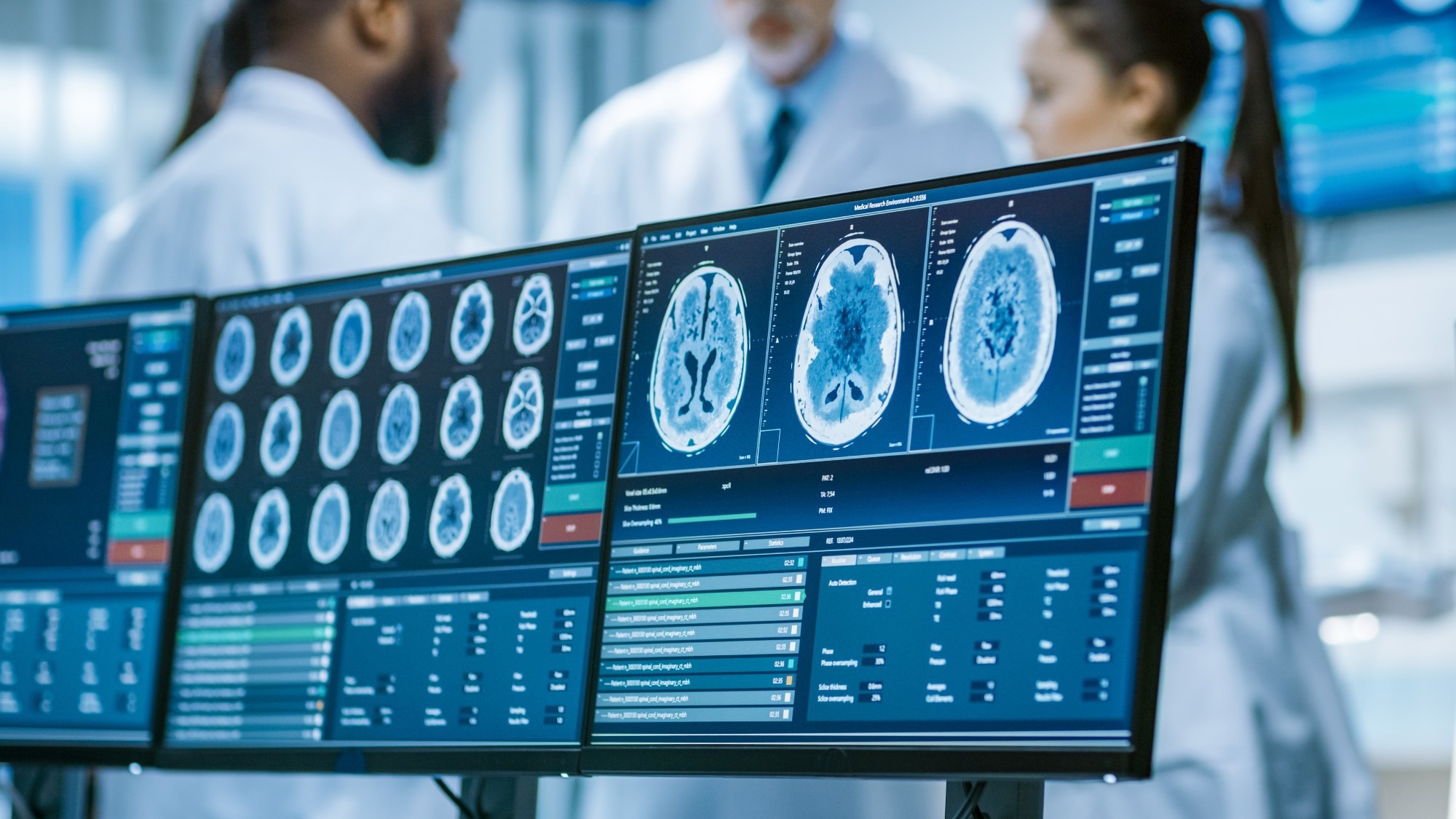In a recent study published in Nature Methods, researchers introduced DELiVR, a virtual reality (VR)-enhanced deep-learning pipeline for efficient neuronal activity detection in brain imaging, providing a user-friendly tool that improves data annotation and segmentation accuracy.
 Study: Virtual reality-empowered deep-learning analysis of brain cells. Image Credit: Gorodenkoff/Shutterstock.com
Study: Virtual reality-empowered deep-learning analysis of brain cells. Image Credit: Gorodenkoff/Shutterstock.com
Background
Analyzing protein expression is crucial for understanding physiological and disease mechanisms. Traditional immunohistochemistry provides limited insights from tissue sections, while tissue clearing with fluorescent imaging offers a comprehensive view at the whole-organism level.
Further research is needed to refine detection techniques, expand applications across different conditions, and fully understand the complex interactions within neural networks.
About the study
Researchers have developed a comprehensive method for processing and analyzing whole-brain immunolabeling using a modified SHANEL protocol.
This protocol involves several stages of preparation, including dehydration, rehydration, and staining with c-Fos antibodies, which are used as markers for neuronal activity. The process is enhanced by a series of washing and blocking steps to ensure specificity and clarity in labeling.
The team employed light-sheet microscopy to detect and visualize specific brain cells. This technique allows for high-resolution imaging of brain tissue, which has been processed to be transparent.
Through the use of specific antibodies and advanced optical systems, researchers can capture detailed three-dimensional images of neuronal activity across the entire brain.
The researchers utilized automated and manual methods to analyze the vast amounts of data generated from these images. They developed a software pipeline named DELiVR, which integrates VR and deep learning to streamline the annotation and segmentation of brain cells.
This system allows for rapid and accurate identification of cell types and activity patterns, significantly speeding up the data analysis process. In addition to the technical advancements, the study also focused on the practical application of these methods in biomedical research.
Study results
The team utilized the SHANEL protocol for whole-brain c-Fos immunostaining, tissue clearing, and light-sheet fluorescence microscopy (LSFM) to facilitate deep-learning model training.
To annotate these complex datasets effectively, they transitioned from the traditional two-dimensional (2D) slice-by-slice annotation to a more dynamic 3D approach using VR. This shift was enabled by employing commercial VR software such as Arivis VisionVR and syGlass, which allow annotators to immerse themselves fully in the volumetric data.
These tools significantly reduced annotation time and improved accuracy compared to the traditional methods used in ITK-SNAP.
The VR approach enhanced the training process of deep-learning segmentation models by enabling rapid and precise annotation of regions of interest (ROIs) in three dimensions.
For example, using Arivis VisionVR, annotators could apply adaptive thresholding to defined ROIs based on their input, which streamlined the annotation process. In contrast, traditional 2D annotation required segmenting c-Fos+ cells in each image plane, a more time-consuming and error-prone method.
To fully leverage these annotated datasets, the team developed DELiVR, a comprehensive deep-learning pipeline tailored for detailed neuronal activity analysis across the entire brain.
DELiVR employs a series of steps to process and analyze brain images, starting from downsampling raw images to aligning segmented cells with the Allen Brain Atlas using sophisticated algorithms like mBrainAligner.
The pipeline facilitates the detection and mapping of cells to specific brain regions, providing a better understanding of neuronal activity that surpasses previous non-deep-learning models.
DELiVR’s effectiveness was validated against traditional methods, showing a substantial improvement in detection accuracy and sensitivity. The deep-learning pipeline increased the number of cells detected and enhanced the precision of these detections, outperforming established methods such as ClearMap.
For visualization, DELiVR produces a detailed map of segmented cells, coloring each cell according to its brain region, which can be further visualized using tools like BrainRender.
The flexibility of DELiVR extends to its deployment; it is packaged in a user-friendly Docker container that can operate on both Linux and Windows.
This packaging includes a dedicated Fiji plugin, simplifying the use of DELiVR for researchers with varying levels of technical expertise. Moreover, the system allows for re-training on different datasets, enhancing its adaptability and precision for various research needs.
Additionally, DELiVR’s capabilities were demonstrated in a study of cancer-associated changes in brain activity. The pipeline was used to compare neuronal activity patterns between mice with different types of cancer, revealing significant variations in brain activity related to cancer-associated cachexia.
Conclusions
To summarize, the team introduced DELiVR, a VR-enabled deep-learning pipeline for whole-brain cell mapping in mice, designed to be accessible to biologists without coding skills through a Fiji interface. Utilizing VR for precise training annotations, DELiVR enhances segmentation accuracy and integrates easily with existing datasets.
Traditional methods like ClearMap, which often miss subtle variations due to noise, are outperformed by DELiVR’s 3D BasicUNet.
The tool demonstrated its efficacy by profiling brain activation in cancer-bearing mice, revealing distinct neuronal patterns linked to weight management. DELiVR combines high accuracy in cell mapping with user-friendly features, advancing the study of neurophysiological phenomena in disease contexts.
This article was originally published on news-medical
